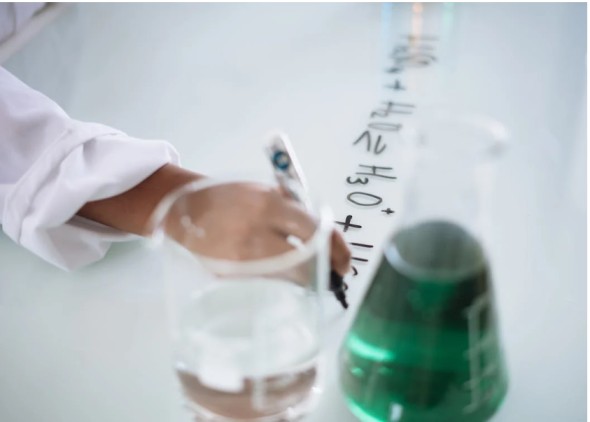As the solar blazes overhead at some point of sizzling summer days, the risk of warmth-associated illnesses becomes a extreme subject. Dehydration is a common outcome of extended publicity to high temperatures, and it can lead to a number health problems, from slight warmth exhaustion to severe warmth stroke.
While hydration is the primary line of protection, in some cases, intravenous (IV) fluids become a vital intervention to top off misplaced fluids and electrolytes.
In this article, we’re going to delve into the science of dehydration, the role of IV fluids in combatting heat-associated ailments, and how this medical intervention can save lives in crucial conditions.
The Body’s Heat Regulation Mechanism
Before delving into the role of IV fluids, it’s crucial to recognize how the frame manages heat. The human body has an complicated device for retaining center temperature within a slim, safe range. When uncovered to immoderate warmness, the frame responds in numerous ways:
Sweating: One of the number one mechanisms is sweating. As the body temperature rises, sweat glands produce sweat, which evaporates from the skin, dissipating warmness and cooling the frame.
Blood Vessel Dilation: Blood vessels close to the skin’s surface dilate, or enlarge, to launch heat, growing blood glide to the skin.
Heat Dissipation: Excess heat is transferred from internal organs to the pores and skin and released thru conduction, convection, and radiation.
However, when the body’s cooling mechanisms can not hold up with the warmth won from the surroundings or bodily exertion, it may lead to warmness-associated ailments.
The Impact of Dehydration
Dehydration is a massive chance aspect in warmness-associated ailments. As the body sweats to settle down, it loses no longer only water however also essential electrolytes like sodium and potassium.
Dehydration occurs whilst the loss of fluids exceeds intake, and it could lead to numerous signs and symptoms:
Thirst: One of the earliest signs of dehydration is an elevated sensation of thirst.
Dry Mouth and Skin: Dehydrated individuals often enjoy dry mouth, dry and sticky pores and skin, and reduced pores and skin elasticity.
Fatigue: Dehydration can result in fatigue and decreased energy stages.
Headaches: As the frame loses fluids, it can cause headaches and dizziness.
Muscle Cramps: Dehydration can result in muscle cramps and contractions.
Heat Exhaustion: If dehydration continues, it may development to warmth exhaustion, characterized by using immoderate sweating, weak point, nausea, and an multiplied coronary heart price.
The Role of IV Fluids in Treatment
In cases of severe dehydration, heat stroke, or warmth exhaustion, IV fluids end up a critical part of remedy. Intravenous rehydration includes administering fluids and electrolytes immediately into the bloodstream through an IV line. Here’s how IV fluids play a crucial function in treating warmness-related illnesses:
1. Rapid Rehydration
IV fluids are the fastest manner to rehydrate the frame. When fluids are administered intravenously, they bypass the digestive gadget and are without delay to be had to flow into at some point of the body. This rapid rehydration is essential in cases of extreme dehydration when sufferers may be unable to drink sufficient fluids to compensate for their losses.
2. Restoration of Electrolyte Balance
Intravenous rehydration no longer best replenishes misplaced fluids but additionally restores electrolyte balance. Electrolytes like sodium, potassium, and chloride are critical for the proper functioning of cells, nerves, and muscles. IV fluids are formulated to encompass the necessary electrolytes, ensuring that they’re delivered at once to the cells that need them.
3. Cooling the Body
In instances of warmth stroke, in which the frame’s temperature law gadget fails, IV fluids can be administered with bloodless fluids to help cool the body from the inner. This is a critical step in preventing organ damage and mitigating the doubtlessly existence-threatening consequences of extreme warmness.
4. Treatment of Heat-Related Illnesses
For individuals affected by warmth exhaustion or warmth stroke, IV fluids can be a life-saving intervention. These conditions often cause nausea, vomiting, and changed attention, making oral rehydration not possible. IV fluids skip the gastrointestinal system and are absorbed directly, addressing dehydration and electrolyte imbalances successfully.

The Science of IV Fluids
Understanding the science of IV fluids is essential to realize their role in treating warmness-associated ailments:
1. Isotonic Solutions
The most typically used IV fluids are isotonic solutions, which includes Normal Saline (zero.9% sodium chloride) and Lactated Ringer’s. These solutions have a comparable osmolarity to blood and are designed to replace both lost fluids and electrolytes. Normal Saline basically contains sodium and chloride ions, at the same time as Lactated Ringer’s additionally includes potassium, calcium, and lactate ions.
2. Osmolarity and Fluid Movement
Osmolarity is a measure of the attention of solute particles in an answer. IV fluids with an osmolarity just like blood plasma are considered isotonic. This similarity prevents osmotic stress imbalances, making an allowance for the rapid movement of fluids across mobile membranes and into cells that need hydration.
3. Hypertonic and Hypotonic Solutions
Hypertonic solutions have a higher osmolarity than blood plasma and are used for unique clinical situations. Hypotonic answers have a lower osmolarity and are normally not used for rehydration because they could reason cells to swell, leading to capacity headaches.
4. Careful Administration
The administration of IV fluids is a specific scientific technique. Healthcare specialists have to calculate the ideal fluid quantity and electrolyte composition primarily based at the patient’s circumstance, weight, and specific needs. IV strains are used to deliver fluids slowly and gradually to save you headaches.
Preventing Heat-Related Illnesses
While IV fluids are important for the remedy of heat-related ailments, it is vital to awareness on prevention because the first line of defense:
Hydration: Staying well-hydrated is the primary method of preventing dehydration. When uncovered to heat, increase your fluid consumption, in particular water and electrolyte-rich drinks.
Limit Sun Exposure: Avoid extended publicity to the solar, specifically throughout top hours, and use sunscreen and protective apparel.
Rest and Shade: Take breaks in shaded areas and rest in the course of the freshest components of the day.
Cooling Strategies: Use cooling techniques like fanatics, aircon, or cold compresses to lower body temperature.
Know the Signs: Be privy to the signs of heat-associated ailments and searching for scientific interest right away if they occur.

Conclusion: A Lifesaving Intervention
IV fluids have revolutionized the treatment of heat-related illnesses. By supplying rapid rehydration and electrolyte balance, they offer a lifeline to people facing dehydration, warmth exhaustion, or warmness stroke. However, the best technique is usually prevention.
Staying well-hydrated, protecting your self from immoderate warmness, and recognizing the signs of warmth-associated illnesses will let you enjoy the summer even as heading off the want for IV fluid intervention.
In cases where remedy is important, the technology of IV fluids affords a radical knowledge of why and the way they’re administered to ensure the fine feasible final results.